1099-R reports distributions from:
- Profit-sharing/retirement plans
- Life Insurance/Annuity Contracts
- IRA's
- Disability Plans
It's important to understand that 1099-R reports distributions regardless of taxability. This means it's possible to receive a 1099-R even when no taxes are due on the distribution.
For example, if you take out a $50,000 loan against a universal life insurance policy that you own, you will owe no taxes on the $50,000. You will, however, receive a 1099-R reporting a $50,000 distribution paid to you by your life insurance company. The 1099 will report the distribution amount of $50,000 and also report that $0 is taxable.
More specifically, Box 1 of the 1099-R will show the $50,000 distribution. Box 2a will either be blank or specify $0 showing that none of the $50,000 distribution is taxable. Here's a blank 1099-R to show you the specific boxes:
 1099-R Taxable Amount Calculation
1099-R Taxable Amount Calculation
If you surrender a life insurance policy or non-qualified annuity for its cash surrender value, the insurance company will calculate the taxable distribution for you. However, if you want to determine your taxable distribution from the surrender ahead of time, the calculation is pretty simple.
The taxable amount is the net cash surrender value minus the premiums you paid into the policy.
So for example, let's say that you own a whole life insurance policy with $250,000 in cash value. You paid $115,000 in total premiums to date. If you surrender this life insurance policy and receive its cash value, the 1099-R you receive should have boxes 1 and 2a filled out as follows:
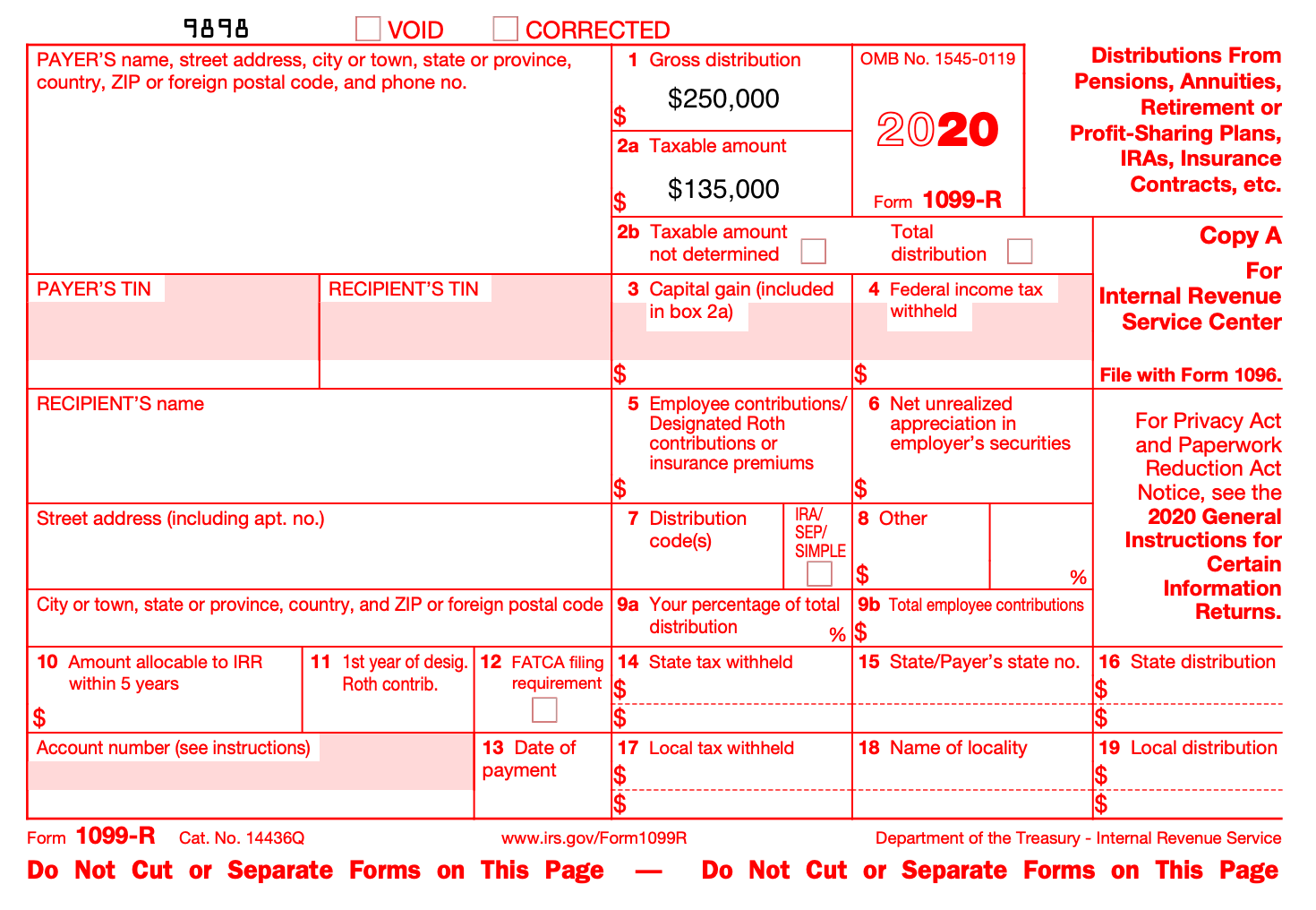 Box 1 shows the total amount you received from the insurance company ($250,000). Box 2a shows the amount of cash value minus the premiums you paid, which is the taxable amount. $250,000 – $115,000 = $135,000
Box 1 shows the total amount you received from the insurance company ($250,000). Box 2a shows the amount of cash value minus the premiums you paid, which is the taxable amount. $250,000 – $115,000 = $135,000
Potential Adjustments to Taxable Basis
Some riders may not count towards your taxable basis in a life insurance policy. So if you are attempting to perform the taxable distribution calculation on your own, you may need to adjust the premiums you paid by riders that comprised your total premium. The good news is that most life insurance companies keep a tally of your cost basis and make it readily available to you.
The 1099-R will not report any adjustments made to the premiums you paid for the purpose of computing your cost basis.
What to do if you think there is a Reporting Error
If the taxable distribution reported by the life insurer differs significantly from what you calculated for the taxable distribution, you should contact the insurance company and ask for clarification. While errors are uncommon, they are not unheard of.
If the insurance company finds that they made an error in reporting the taxable distribution, they will correct the 1099 for you and refile it with the IRS.
You should note that in some cases, you'll receive the 1099-R more than a year after surrendering a policy. If for example, you officially cancel a life insurance policy for its cash value in January, you won't receive the 1099-R for the policy until around February of the following year to file with your taxes. It's wise to take note of this if you fall into this sort of timeline to ensure you have appropriate records.
Also, if the 1099 reports an error, you'll want to contact the insurance company as soon as possible. You'll need the corrected 1099 to file your income taxes.
1099-R for 1035 Exchanges
If you buy a new life insurance policy by making use of a 1035 exchange, you should receive a 1099-R reporting the distribution amount and showing a $0 taxable amount. This is very similar to receiving a 1099-R when taking a cost basis withdrawal or loan from a life insurance policy. The key difference is that you were never in receipt of the funds.
I bring this up because it confuses some people to receive a 1099 when using a 1035 exchange. They mistakenly believe that they owe taxes on the transfer, which they do not. The 1099 will look similarly to the example above for a non-taxable distribution. The full transfer amount will appear in box 1 with box 2a showing no taxable amount. Additionally, box 7 should use should report code 6, which is the specific code for a 1035 exchange. The code for other distributions from life insurance will normally be 7.
The calculation for Non-Basis Withdrawals and Modified Endowment Contracts
If you withdraw a sum of cash from a life insurance policy that exceeds your cost basis you will owe taxes on this amount. For example, let's say that you have a universal life insurance policy with $200,000 in cash value. You paid $100,000 in premiums to date on this policy so your cost basis is $100,000. You decide to withdraw $150,000 from the policy.
Your taxable distributions will be $50,000. The 1099-R you receive should look like this:
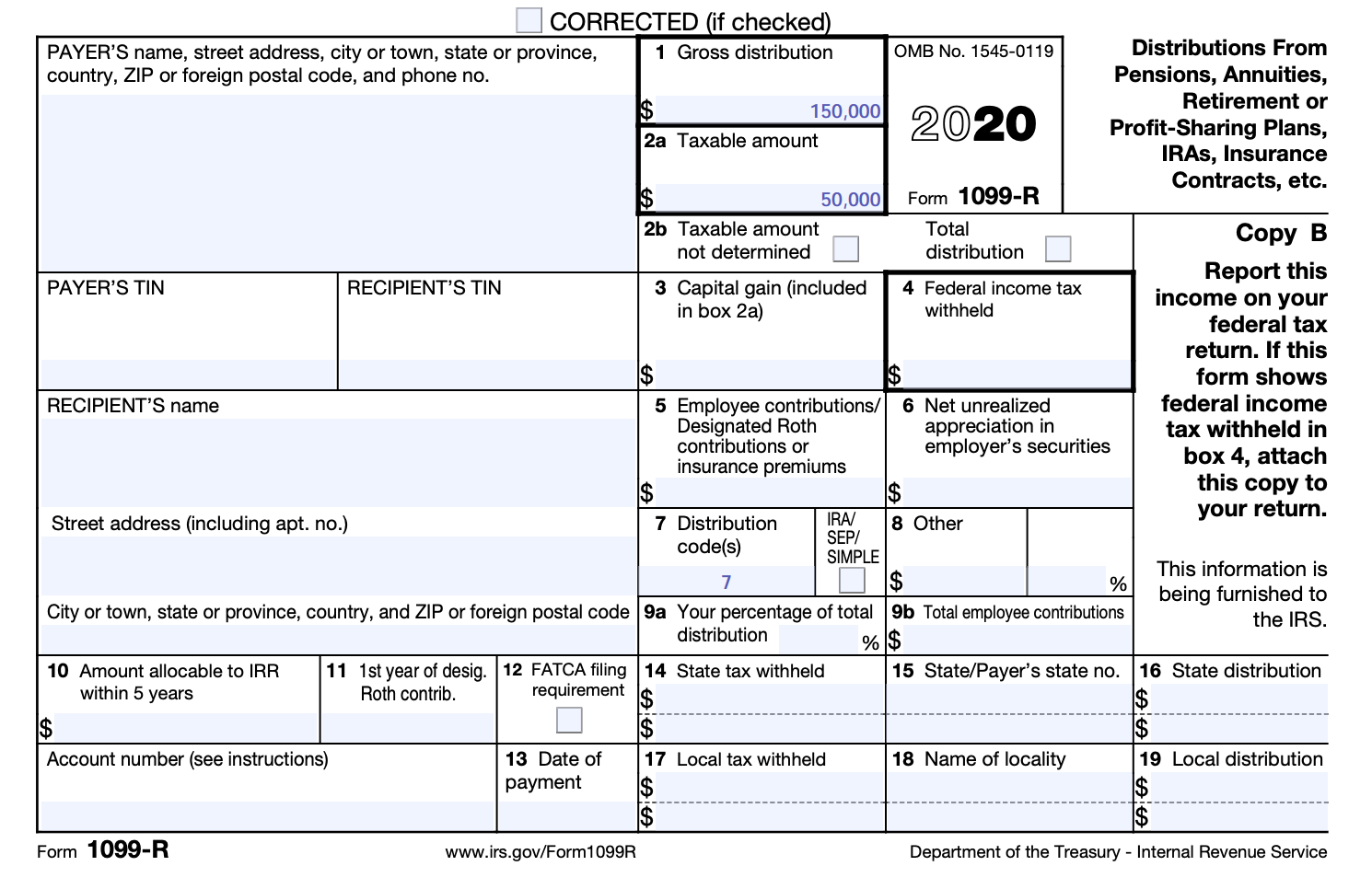 If you own a Modified Endowment Contract (MEC), you cannot take a FIFO withdrawal against the basis. So if there is a gain in the policy, you'll have to withdraw this first. Additionally, loans taken against MEC's count as withdrawals from gain if gains exist.
If you own a Modified Endowment Contract (MEC), you cannot take a FIFO withdrawal against the basis. So if there is a gain in the policy, you'll have to withdraw this first. Additionally, loans taken against MEC's count as withdrawals from gain if gains exist.
For example, if you are 50 years old, own a MEC that has $500,000 in cash value with a $150,000 cost basis, and you decide to withdraw $25,000 from the policy, you will have $25,000 in taxable distributions. The 1099 should look something like this:
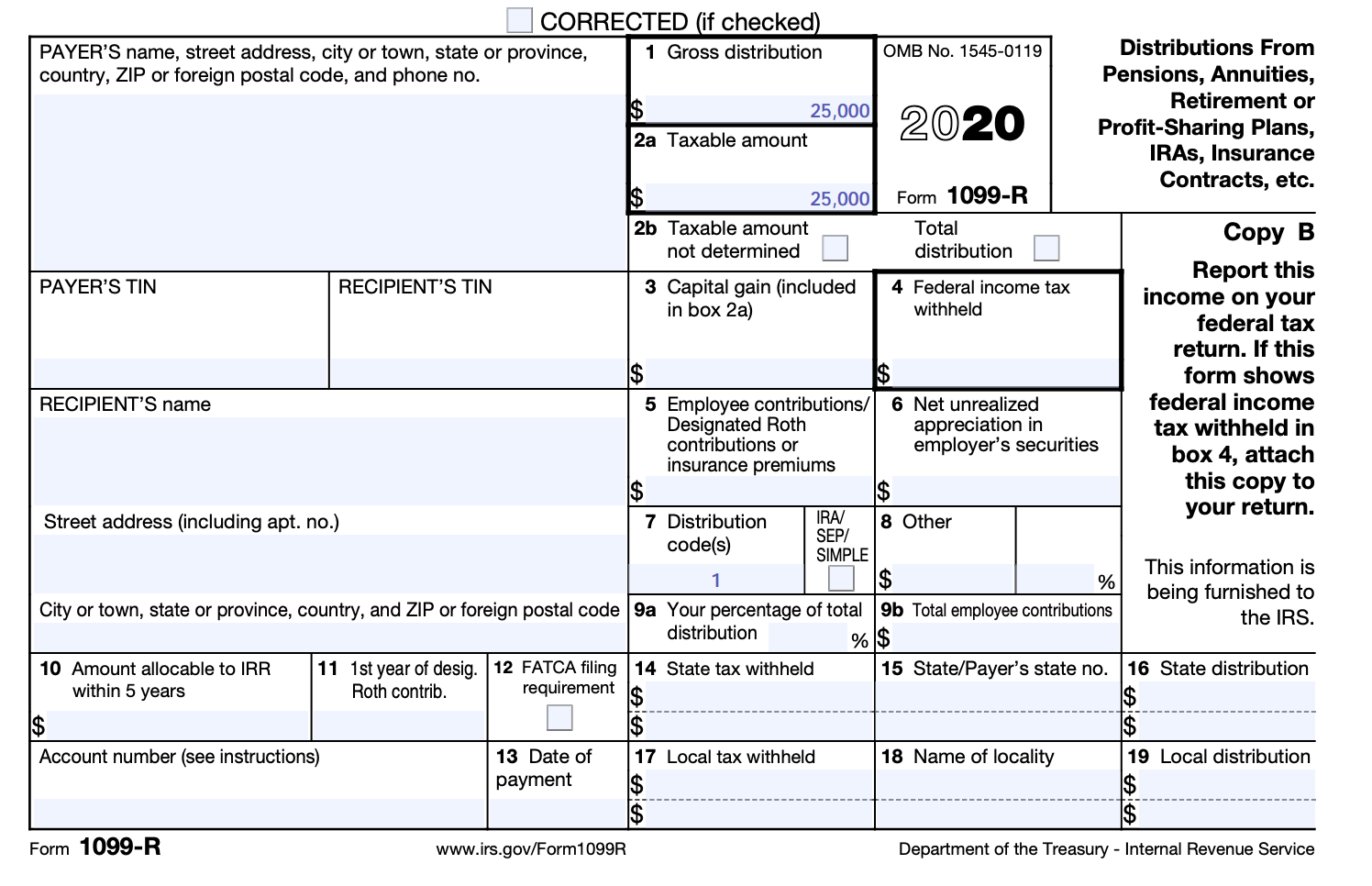 Notice also that the distribution code changed. This happens because Modified Endowment Contract have early withdrawal penalties similarly to IRA's and qualified retirement plans. This code notes that you were under 59.5 when you took the withdrawal and are subject to the 10% additional tax for an early withdrawal.
Notice also that the distribution code changed. This happens because Modified Endowment Contract have early withdrawal penalties similarly to IRA's and qualified retirement plans. This code notes that you were under 59.5 when you took the withdrawal and are subject to the 10% additional tax for an early withdrawal.
Withholding Amount
Notice in the examples above the 1099 does have a box to report withholdings from your distribution. Life insurance companies will ask if you'd like any amount withheld for tax purposes when you take a distribution or surrender a policy. If you choose to have an amount withheld, it will show up in these boxes (typically box 4).
The insurance company already sent this money to the IRS, so it counts as part of the money you paid in advance of calculating your taxes due. If you paid too much in advance, you will receive the excess amount back as a refund.
Why did I get a 1099-INT?
When people cancel policies either for cash surrender or as part of a 1035 exchange, they sometimes receive a 1099-INT from the life insurance company come tax filing time the following year. This 1099 comes in addition to the 1099-R.
1099-INT reports interest payments. This usually happens because the insurance company took longer than legally permitted to distribute your money. When this happens, the insurance company owes you interest on the money they held longer than legally allowed.
For example, assume you owned a whole life policy with $100,000 in cash value. You request a full surrender of the policy. The insurance company delays the processing and doesn't complete the request until after the state allowed processing time. Because the insurance company held onto your money longer than allowed by state law, it owes you interest on the money. It will send this amount with the cash surrender value once the company processes the surrender request.
The following year, you'll receive both a 1099-R reporting the distribution from your life insurance policy, and a 1099-INT reporting the interest paid from the delay in processing. The 1099 will report the interest income paid in box 1.
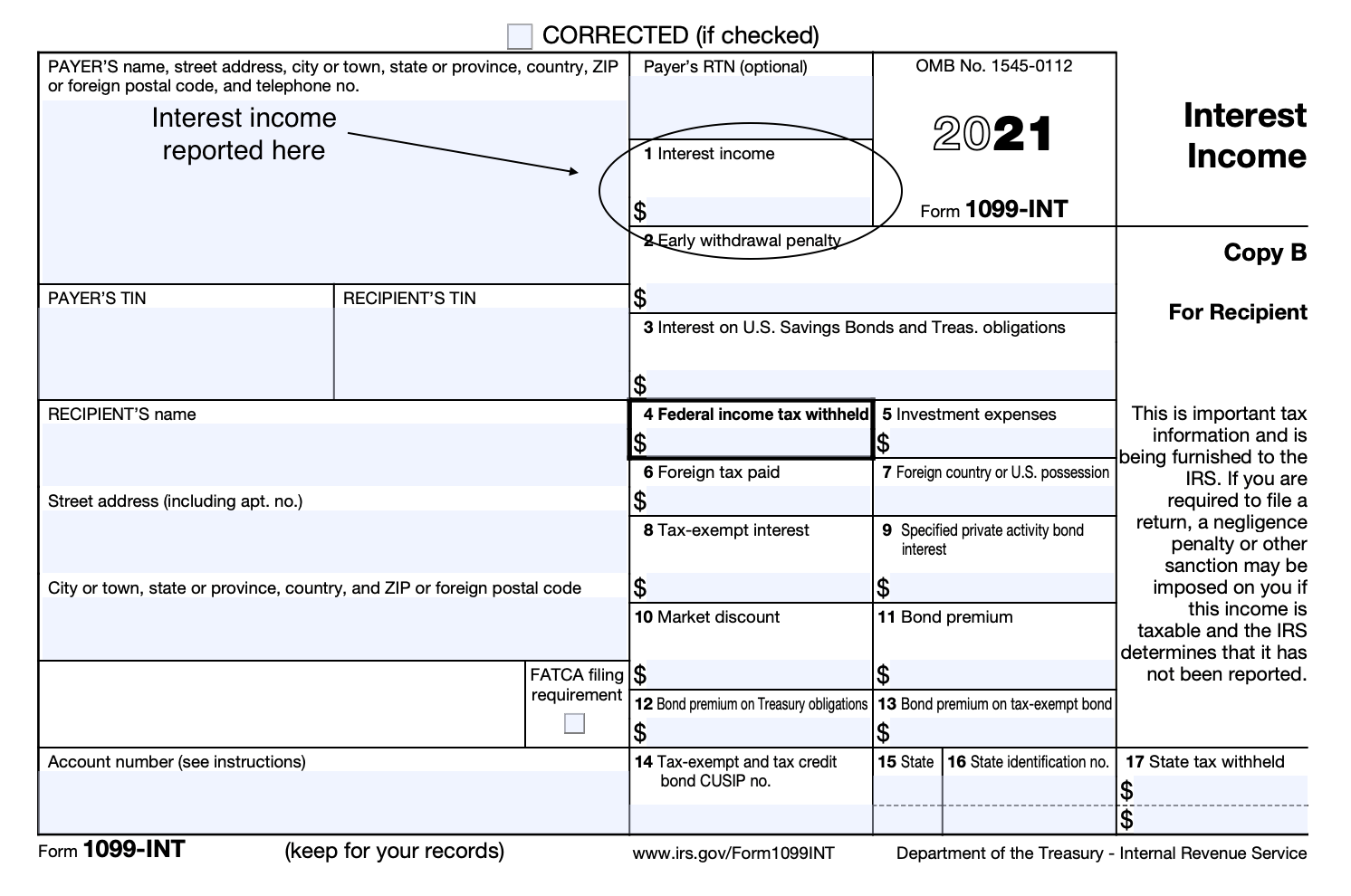 Again, because several months go by between receipt of the funds and the arrival of these tax reporting documents, it's prudent to keep detailed records of the monies you received in order to reconcile and ensure that the correct amounts show up in the 1099. If the insurance company made an error in reporting taxable distributions or interest income received, you'll want to have this corrected or else you potentially owe taxes on money you never received.
Again, because several months go by between receipt of the funds and the arrival of these tax reporting documents, it's prudent to keep detailed records of the monies you received in order to reconcile and ensure that the correct amounts show up in the 1099. If the insurance company made an error in reporting taxable distributions or interest income received, you'll want to have this corrected or else you potentially owe taxes on money you never received.
Statutory interest calculations vary by state. If you want to attempt reconciling the insurance company's calculation and payment of interest to you, you'll need to look up the interest payment required and the timing of interest owed for the state in which you originally bought your life insurance policy. Keep in mind that this may not be the state in which you now live.


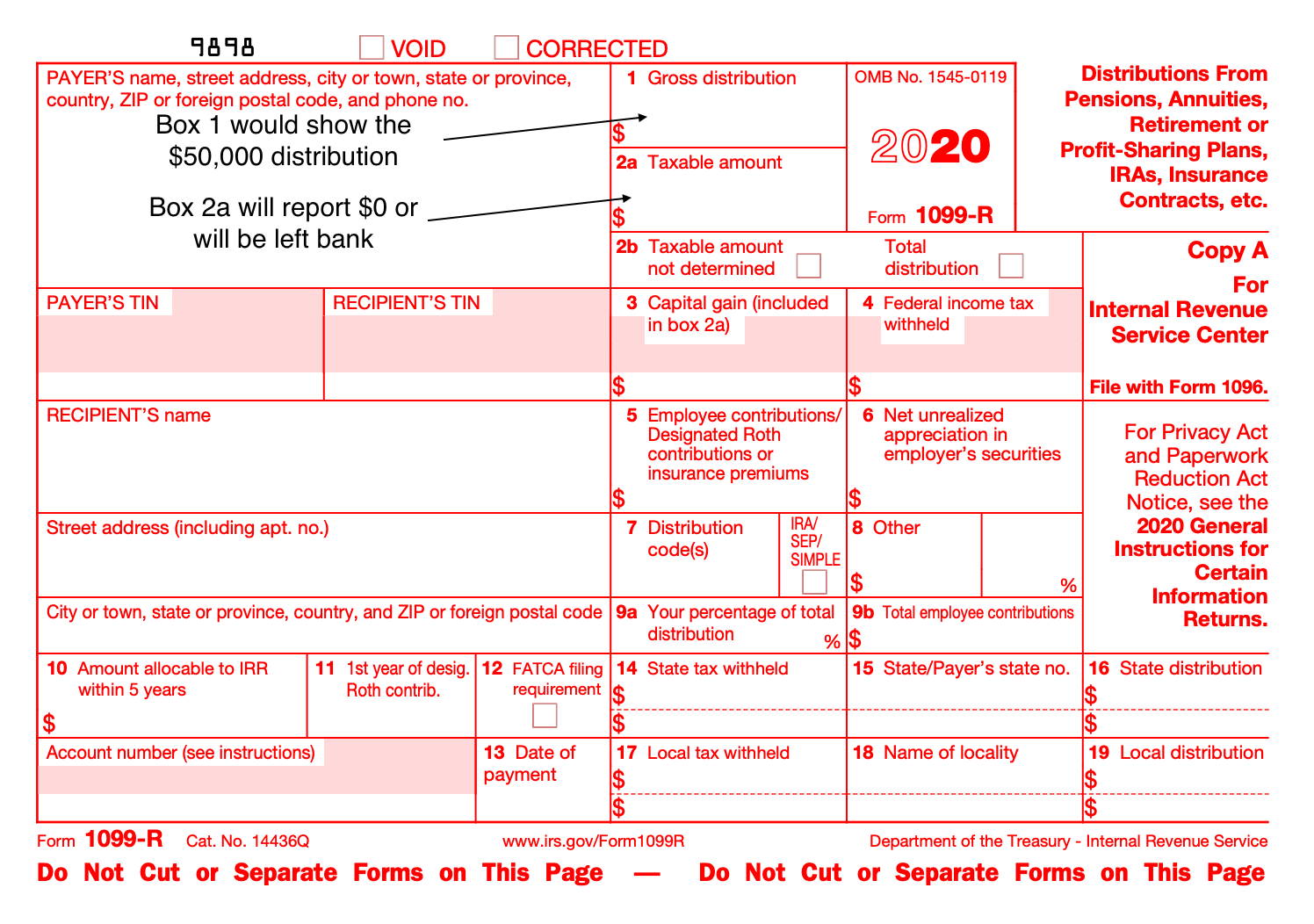
Does not say where to report it on the 1040 when you receive a 1099R when you cash in a life insurance policy, not because of dealt?
Hi Jim, this article wasn’t intended to help you fill out your tax return. You’ll need to seek out one-on-one advice with a licensed tax professional for that.
I know its taxable but for the life of me I cannot find the answer of how much taxes they will take. Is it 70%, is it 50%, is it 6%? Good grief I just want to know how much taxes will come out. I have a life insurance of $30,000 that come in when my husband passed, I then got an unexpected 1099-r on that. I know it is taxable…. I know that. How much taxes are they going to take out? how do I calculate that? It looks like I just send it in and don’t find out till someone in the IRS just makes something up, I cannot get an answer.
Hi Teresa,
Normally life insurance proceeds are not taxed–at least not income taxable. The 1099-R could be more about reporting monies received by you, which almost all financial institutions prepare and file as a paper trail largely to combat money laundering. I realize you may aren’t looking to commit illegal activity, but there are people who could be and there is a system in place to thwart it that often impacts all of us.
If any of the distribution is taxable (highly unlikely) the 1099 would report the taxable amount in box 2a. They can’t tell you the exact tax liability because U.S. Tax Code places that responsibility on you when you file your taxes. It’s your responsibility to calculate your tax liability, or hire a professional to do this on your behalf. No financial institution will ever take on the responsibility of telling you what you will ultimately pay in taxes on any distribution received.
I was expecting to receive a 1099-R for a whole life policy surrendered in 2021, but the explanation of benefits accompanying the check states that “In accordance with the rules of the IRS we are not required to report federal gain to the IRS because the this policy meets certain criteria involving its year of issue and guaranteed cash value…”
Can you please shed some light on what they year of issue and guaranteed cash value has to do with reporting the income?
Hi Susan, what year was the policy issued? How much cash value was received upon surrender. What is the sum of the premiums paid on the policy?